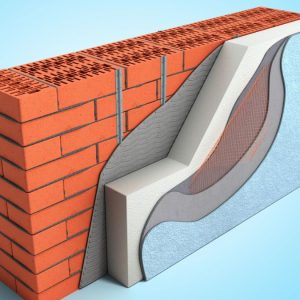How often should you inspect EIFS?

Exterior Insulated Finishing Systems (EIFS) are an increasingly popular form of building insulation and cladding. This versatile system offers superior insulation, excellent fire resistance, and a wide range of decorative options. However, with any exterior cladding system, regular inspections are necessary to ensure it performs as expected and to detect any potential problems. But how often should you inspect EIFS? Let’s take a look.
Why do you need to inspect your EIFS?
As with any other building component, regular inspections are essential to ensure that your EIFS is functioning properly and is in good condition. If left unchecked, unnoticed damage or defects can lead to bigger issues, such as water infiltration, mold growth, and even structural damage. Regular inspections will also help you identify potential areas of concern before they become more serious problems.
When to inspect your EIFS
The frequency of your inspections will depend on several factors, such as the type of system you have installed, your climate and weather conditions, the age of the system, and the type of exposure it receives. Generally speaking, most experts recommend inspecting your EIFS at least once every three years for the best results. If you live in an area prone to extreme weather such as hurricanes or heavy rains—or if you have an older system—then more frequent inspections may be needed.
What to look for during an inspection
When inspecting your EIFS, there are several elements that should be taken into consideration. First and foremost, you should look for any signs of physical damage or deterioration, such as cracks, holes, or missing pieces. Additionally, staining on the wall or discoloration in the cladding material; sagging or soft spots caused by water accumulation; visible cracks in the cladding; or anything else that looks out of place or unusual can be a sign that something is wrong. Also, check to see that all flashing is intact and properly sealed against moisture intrusion. Finally, ensure all components are still securely attached to the wall surface, so they don’t come loose during a storm or high winds.
You can protect your investment in your home or business and keep your system in top shape for years to come by following these guidelines for inspecting and repairing EIFS. How often these inspections need to be conducted will vary depending on a few different factors. Contact JKI Industries today if you need help with your EIFS system.
